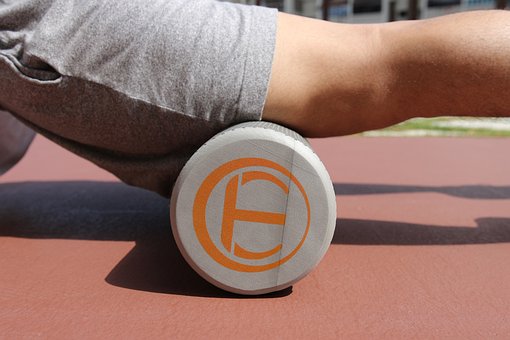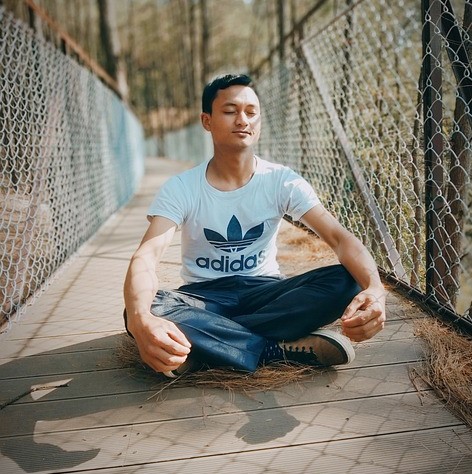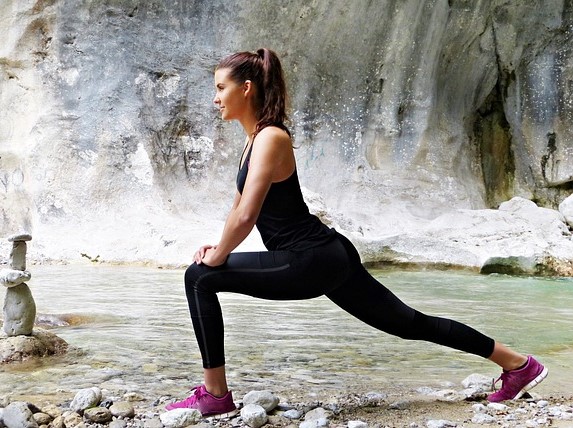Is warming up before physical activity necessary?
Article by Kayla Larsen
YES! Warming up your body before physical activity is recommended for many, great reasons.

Main Purposes for a Warm-Up:
- Reduces the Risk of Injury
- Enhances Performance
- Improves Physical Readiness
- Improves Mental Readiness
- Decreases Muscle Soreness
Physical activity is defined as any bodily movement that requires energy expenditure. Physical activity includes leisure, sport, transportation, work, and activities of daily living. For example; moderate yard work, prolonged cleaning, shovelling, and home maintenance are activities that many adults often perform. It can be easy to neglect a simple warm-up routine when performing household activities.
Three signs you should be warming-up before your activities:
- Your heart rate increases rapidly during your activity time
- You experience shortness of breath with activity
- You have muscle soreness or pain after activity
Warm-ups prepare the body by:
- An increase in blood flow to active muscles
- An increase in core temperature to prepare for exercise
- An increase in muscle temperature for improved ability to stretch through appropriate ranges of motion
- Improving mobility in areas that feel stiff
- Improving alignment to potentially influence better muscle activation patterns
- Helping with central nervous system activation, muscle activation, and mind-muscle connection
A proper warm-up before moderate to vigorous activity prepares your body for increased heart rate, blood flow, breath rate, and oxygen uptake. The slow rise in temperature helps to optimize flexibility and efficiency.
Evidence supports an effective warm-up can improve physical performance and reduce the risk of injury. Certain types of stretching can also improve range of motion, reduce muscle tone, and reduce stress on the joints and tendons. Visualization and mind preparation during a sports warm-up has been known to improve performance and mental readiness.
Think of a warm-up for your body as being similar to warming up your car after a snowfall or cold rain. Generally, warm-up time ranges from 5-30 minutes and the more intense the workout the longer the warm-up.
Older theories of warm up include “Static stretching” where you hold each muscle for 30 seconds or more. Static stretching has its place but NOT in a warm-up routine.
Best suggestion to include in a warm-up includes:
- self-myofascial release
- diaphragmatic breathing
- dynamic stretching
- cardiovascular warm-up
- sport-specific movement

Self-Myofascial Release:
Self-myofascial release (SMR) includes the use of tools such as a foam roller, pin roller or therapy balls. This allows you to use pressure to self-massage soft tissues (muscles, tendons, ligaments, fascia, skin, fat, blood vessels, peripheral nerves). If you have sensations of stiffness, tightness or pain some SMR techniques can be beneficial with light to moderate pressure for 20-60 seconds for 2-3 target muscle groups. Long periods of SMR should be saved for the cool-downs or recovery days as overuse of foam rolling can dampen our nervous systems output. Foam or ball rolling can produce discomfort but should not be painful.

Diaphramatic Breathing:
Breath work is an essential part of a warm-up. Connecting breath helps to coordinate the functions of the core and pelvic floor muscles so they can effectively stabilize during resistance exercises. Deep breath work can help to bring awareness to muscle groups and help to release unwanted tensions.
Deep Belly Breathing: Give it a try
- Sitting up-right with good posture, exhale completely. Breathe out until you feel your belly button moving towards your spine.
- Hold your exhale for 2-5 seconds
- Inhale deeply for 5-10 seconds, feel your lungs expanding and your belly moving out and getting as big as possible.
- Repeat this with your eyes closed for 10 deep belly breaths.
Breath work is a way we can bring awareness and stillness to our mind and body. It is not only crucial to include in a warm-up but an important part of regulating our nervous system, aiding in recovery and healing. Breath control is foundational for athletic success.

Dynamic Stretching:
Dynamic stretching is simply stretching while you move. You take a joint through its full range of motion to prepare it for the more intense exercise to come. It is key to consistently practice and add to your warm-up so you can progress the body's needs for adaptation.
Sample Dynamic Stretches: which ones fit your activity?
- Heel Walking
- Toe Walking
- Marching
- Active Quad Stretch
- Walking Knee to Chest Active Hamstring Stretch
- Walking Lunges with Rotations
- Lateral Lunges
- Running ABC’s
Cardiovascular Warm-Up:
Cardio warm-up helps prepare the body for moderate to intense physical activity. This means getting WARM and starting to sweat! If you are not breathing heavily or sweating after your warm-up is complete, you probably haven't challenged your body to the point where it has shifted into high gear. In this state your heart rate is elevated, your breath is more rapid and your nervous system is ready for activity.
Here are some examples of cardio warm-up activities:
- To warm-up for a brisk walk, walk slowly for 5 minutes
- To warm-up for a run, walk briskly for 5-10 minutes
- To warm-up for swimming, swim slowly at first and then pick up the tempo as you are able to
Sport-Specific Movements:
Last component to include in a warm-up are Sport or Activity specific movements. This will help to prepare for whatever activity, intensity and intention you are aiming for that day. A baseball player always practices a couple hits before he goes up to the plate. A volleyball player practices a couple of hits or smashes before the game has begun.
If you are moving heavy boxes, you could lift a couple empty or light ones to perfect your form and eliminate any unseen obstacles.
Be Kind to your Body
A proper warm-up should be specific to the individual’s fitness level, muscle type, and activity. A warm-up will vary depending on that days activity. It should include a couple of components so you will receive the physical benefits. Physical Therapists (Physios) are healthcare professionals who are able to design warm-up or exercise programs to fit your needs.
To learn more about a proper warm-up program to best prepare you for your lifestyle, call Pinpoint Physio to book an appointment. We would love to support you in achieving your health goals and creating your ideal fitness.
References:
Silva, L.M., Neiva, H.P., Marques, M.C. et al. Effects of Warm-Up, Post-Warm-Up, and Re-Warm-Up Strategies on Explosive Efforts in Team Sports: A Systematic Review. Sports Med 48, 2285–2299 (2018). https://doi.org/10.1007/s40279-018-0958-5
McCrary JM, Ackermann BJ, Halaki MA systematic review of the effects of upper body warm-up on performance and injury. British Journal of Sports Medicine 2015;49:935-942.
Fradkin, Andrea & Zazryn, Tsharni & Smoliga, James. (2009). Effects of Warming-up on Physical Performance: A Systematic Review With Meta-analysis. Journal of strength and conditioning research / National Strength & Conditioning Association. 24. 140-8. 10.1519/JSC.0b013e3181c643a0.
Small K, Mc Naughton L, Matthews M. Small K, et al. A systematic review into the efficacy of static stretching as part of a warm-up for the prevention of exercise-related injury. Res Sports Med. 2008;16(3):213-31. doi: 10.1080/15438620802310784. Res Sports Med. 2008. PMID: 18785063 Review.
Herbert RD, Gabriel M. Herbert RD, et al. Effects of stretching before and after exercising on muscle soreness and risk of injury: systematic review. BMJ. 2002 Aug 31;325(7362):468. doi: 10.1136/bmj.325.7362.468. BMJ. 2002. PMID: 12202327 Free PMC article. Review.
American Heart Association. Warm Up, Cool Down. Retrieved from: https://bit.ly/3JYJcED
World Health Organization. Physical Activity. Retrieved from: https://www.who.int/news-room/fact-sheets/detail/physical-activity
You May Also Like...
-
 ArticleView Post
ArticleView PostTreating Urinary Incontinence
Involuntary leakage is a common issue that comes in many different forms. So how can physiotherapy help treat urinary incontinence?
-
 ArticleView Post
ArticleView PostVertigo & Treatment of Benign Paroxysmal Positional Vertigo
If you experience feelings of intense dizziness, or it seems the room is spinning, you may want to consider physiotherapy treatment for BPPV.
-
 ArticleView Post
ArticleView PostThe problem with teenagers is….. A Physiotherapist’s view.
Teenagers face a unique and often difficult combination of changes that can cause a common pattern of issues.